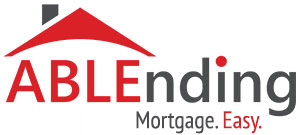Flexible Mortgages Are Made For Today’s Modern Lifestyle
Body
Flexible mortgages are among some of the new mortgage packages that have been created to cater for the modern mortgage market. The modern mortgage market has become more liberal and creative, and therefore this has led to an increase in the choice and diversity of mortgage packages being offered to borrowers. Most major lenders include some kind of flexible mortgage in their product range. The majority of flexible mortgages are sold through the traditional routes and they are increasing their hold in the mortgage market, due to consumer demand.
Essentially a flexible mortgage is a secured loan that can be paid back in varying amounts, and the interest is calculated on the fluctuations of the outstanding balance. Flexible mortgages are particularly suited to today’s lifestyle, for example: ‘jobs for life’ are virtually unknown, you might want a career break to raise a family or you might expect some major life changes in the near future.
A flexible mortgage can offer:
Overpayments
You can pay off your mortgage quicker by making regular overpayments or by paying in a lump sum on an ad hoc basis, without incurring any redemption penalties. A flexible mortgage recalculates your outstanding mortgage balance on either a daily or monthly basis, and your interest payments are quickly adjusted for the overpayments that have been made.
Underpayments
You can reduce your regular mortgage payments or even have a complete payment holiday without being in default. There will be conditions attached to this option, for example: you might have to build up a reserve of overpayments before being allowed to underpay. However, a consequence of underpayment means an increase in your outstanding mortgage balance.
Further loans
You can withdraw lump sums from your mortgage account to be used for any purpose, without the formality of applying for a new loan. There are usually conditions attached to this feature, for example: you might have to build up a reserve of overpayments against which you can borrow, and there will probably be a ceiling on the overall amount you can borrow through your original mortgage.
Not all flexible mortgages offer those features, so you will have to shop around.
The ability to pay off your mortgage early is a necessary feature of all flexible mortgages, and the main point of distinction for a flexible mortgage is the extent to which you are allowed to withdraw funds from your mortgage account. The least flexible mortgage combines overpayment facilities with only the option to take occasional payment holidays.
In a recent survey of flexible mortgages carried out for the Council of Mortgage Lenders, nearly half of the surveyed borrowers had not made use of the flexible options that their mortgage gave them. The borrowers that had made use of the flexible options mainly used the overpayment option to allow them clear their mortgage early by either regular overpayments and/or an occasional lump sum payment.
A more structured approach to the flexible mortgage is offered by the current account mortgage (CAM) and the offset mortgage. With a CAM, there is just one account as it combines your mortgage account and current account. The offset mortgage uses separate accounts for the mortgage, current, and savings account. The interest earnt by the current and savings accounts is offset against the outstanding mortgage capital and the interest is reduced accordingly. It is important to make sure the mortgage rate is competitive because some lenders charge a higher rate than average and thus the benefit is lost.
Flexible mortgages have been around since the 1990’s and they have grown in popularity since then. The future looks good for flexible mortgages, with even more options for borrowers to choose from as time progresses.

Leave A Comment